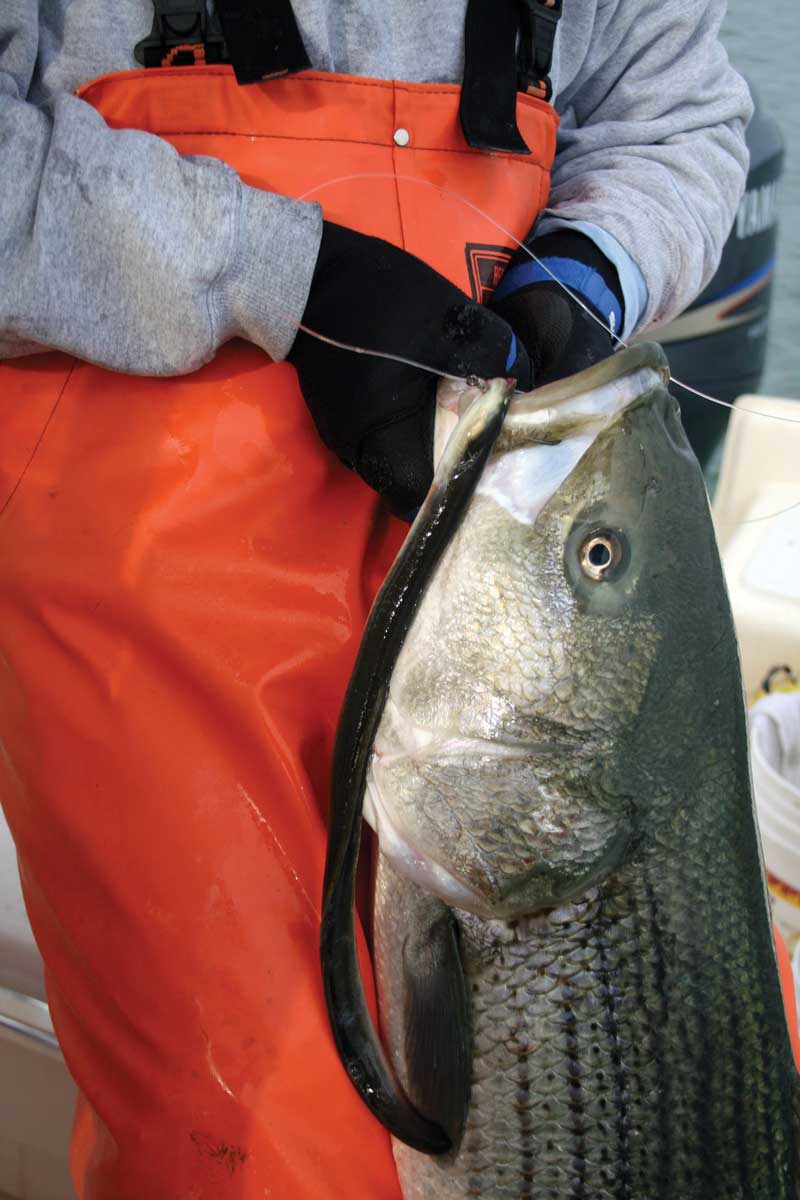Every fall into the winter, big female rockfish are caught out of Cape Charles, VA, and I have always wondered where they came from. They don’t show up along the oceanfront, and we don’t see them in the Upper Bay. They are only in this one location along the channel edge, and the mystery remains, where do they come from?

In 2019, The Fisherman Magazine along with Gray Fish Tag Research, Navionics, and numerous other sponsors, placed MiniPSAT tags in several large post spawn striped bass. The tagged fish were captured off New Jersey and were thought to be part of the Hudson River stock. Once the tags popped off, the data was sent to an Argos satellite and then downloaded to the Gray Fish Tag Research facility in Florida.
The expected route for these fish would be up the coast to New England, but such was not the case. They actually headed east towards the Hudson Canyon and spent the summer roaming around this area before heading to the Nantucket Shoals.
Many questions remain. Do all Hudson River fish behave like this? Do the striped bass we see in New England in the summer come from the Chesapeake Bay?
More fish were tagged this year and hopes are high for more answers, but I have a feeling we are also going to have more questions.
So, what does this have to do with the big rockfish in the lower Chesapeake Bay? I believe they are a small part of the migrating Chesapeake Bay stock that heads to the Norfolk Canyon while most of their contemporaries head to New England.
If you look at a chart, the real ones printed on paper not the electronic ones on your GPS, you will see it is not that far from the mouth of the Chesapeake Bay to the Norfolk Canyon, and there is plenty of fish-holding structure along the way. I have also heard that during World War II, German boats would put out mines in the Atlantic Ocean that would drift with prevailing currents into the mouth of the Bay. A look at the number of ships sunk there is a good indication that the plan worked.
Of course, this is all theory until we get some results from the tags, but for the first time I believe we may have some idea as to where these big rockfish spend their summer.
Of course, knowing where they spend their summer is not going to make them any easier to catch. First, you have to understand that there are not a lot of these huge fish around. Next, they do seem to travel together, so if you happen to catch one, keep your lines in and you may just hook up another.
The closest launch ramp is in Cape Charles, and it is a pretty good facility. It can get backed up on good weather days and weekends, but if you plan to arrive very early, before sunrise, you can usually get your boat in and be on the fishing grounds before the ramp gets crowded.
Follow the channel south towards Old Plantation Light out of the harbor, and then run out to York Spit Channel, Buoy R 28, before putting out your lines.
Live eels are the prime bait. I have tried trolling Stretch 25 and 35 plugs that draw strikes from rockfish in other parts of the Bay, but here, it’s all eels.
I only use circle hooks that I run up through the lower jaw and out through either an eye or the upper jaw. The hook is tied to 40-pound Fluorocarbon leader and that is connected to my 50-pound braid with an Albright knot.
A bright orange bobber is placed on the line to keep a bait at the bottom and halfway to the bottom. Weight is added to the rig to maintain this depth. The third rig is played out to work right on the surface.
The three rods are placed in holders with a light drag set and the clicker on. When a pickup takes place, the clicker will scream, and the angler can increase the drag to set the circle hook.
I have yet to catch a 50-pound rockfish here or anywhere else. I know people who have, and I have seen them caught right next to me. I feel certain the big fish will be here in November and December. If you do get that 50 pounder, please release her.
By Eric Burnley